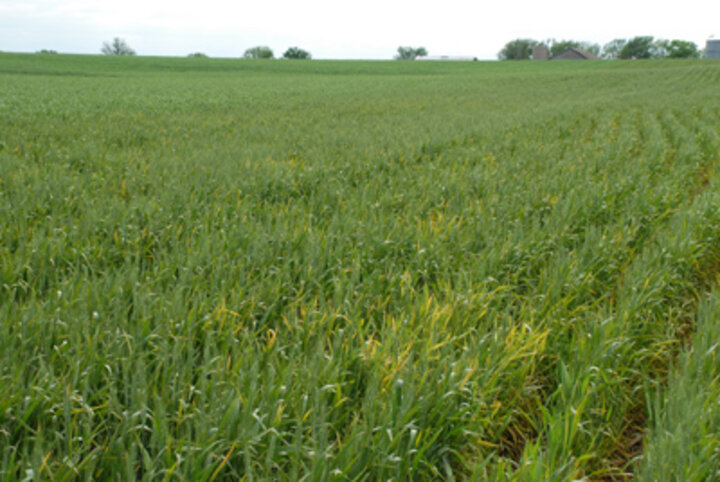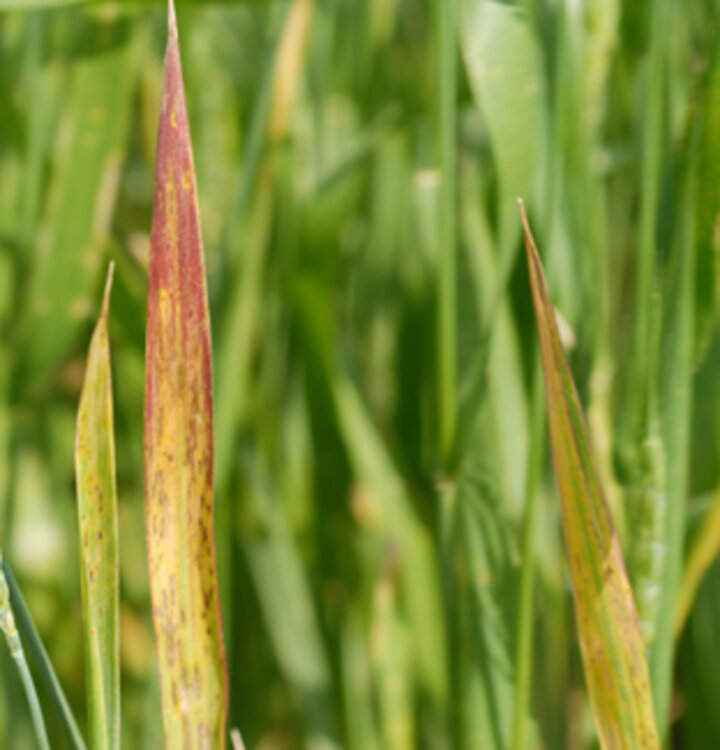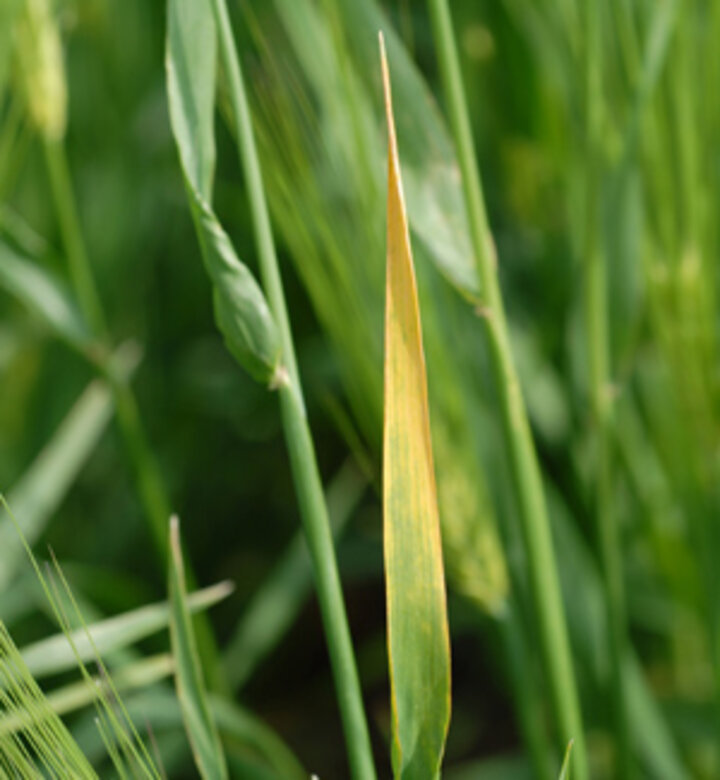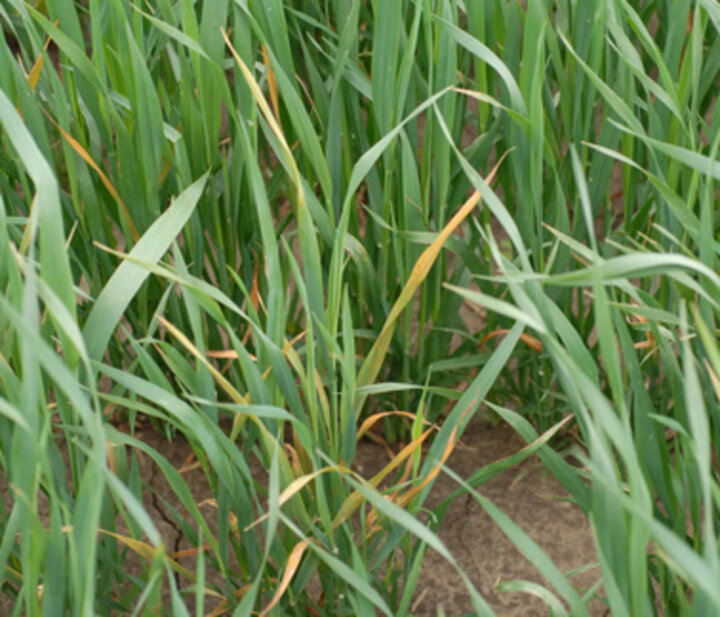May 25, 2007
In Southeast and South Central Nebraska
In many wheat fields in southeast and south central Nebraska, leaves are yellowing starting from the tip or margins and progressing toward the base. The yellowing is visible on the flag leaf, giving the fields a yellow cast (Figure 1). This symptom is caused by barley yellow dwarf virus (BYDV). The virus is transmitted by more than 20 species of aphids and has a wide host range including wheat, barley, oats and many wild and cultivated grasses.
Aphids have been reported infesting wheat in southeast and south central Nebraska the last few weeks. Samples of oat-bird cherry aphid (Figure 2) and corn leaf aphid (Figure 3) have been identified from these fields. These two aphids generally have a lower damage potential than greenbugs, another aphid that may be seen in Nebraska wheat. However, all three aphids are among the most important vectors of barley yellow dwarf virus.
Both the virus and its aphid vectors are favored by cool, wet weather. The rainy weather and cool temperatures we have had in April and May largely contributed to the widespread epidemics of this disease now. BYDV infections can occur in the fall and continue to occur throughout the growing season; fall infections are more damaging than spring infections. Once infection has occurred, nothing can be done to cure the plant.
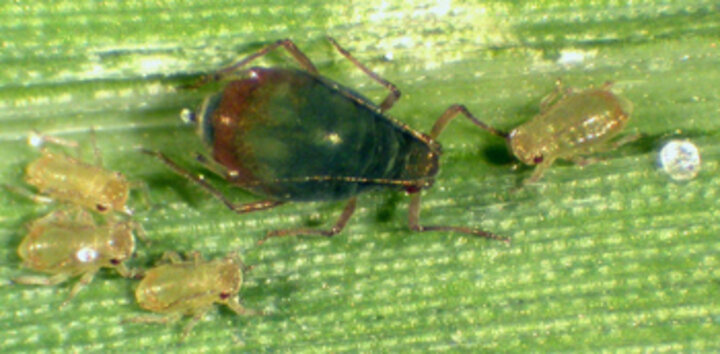
|
|
Figure 2. Oat-bird cherry aphid. |
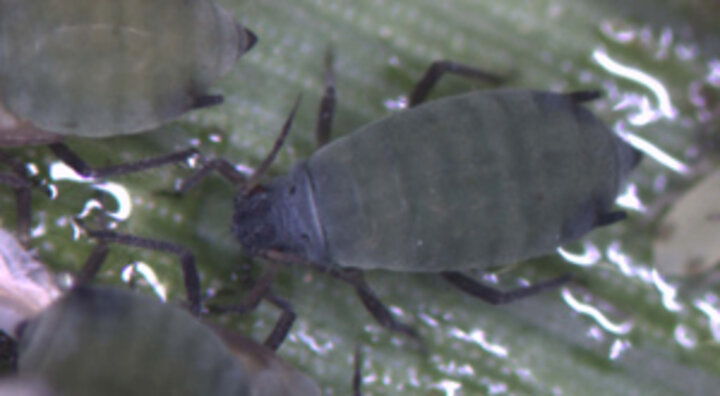
|
| Figure 3. Corn leaf aphid. |
Dwarfing is a symptom of BYDV that is common to all cereal crops infected by the virus. Other symptoms are highly variable within one cereal crop, differ among cereal crops, and can easily be mistaken for nutrient deficiency symptoms. Typically, leaf discoloration in shades of yellow, red or purple occurs from the tip to the base and from the margin to the midrib in wheat (Figure 4), barley (Figure 5) or oats (Figure 6).
Yield losses of up to 25% in wheat, 40% in barley, and 33% in oats have been estimated to be caused by BYDV.
BYDV incidence can be reduced and yield loss minimized by controlling aphids; however, this may not be economical as the virus can be spread by aphids that escape treatment or migrate from non-treated areas. In most years, aphids do not overwinter in Nebraska in high numbers, but winged forms may migrate in the spring with southerly winds, and if conditions are suitable for their growth, relatively rapid growth is possible. Often in Nebraska spring aphid populations are controlled by natural enemies such as lady beetles and parasitoid wasps.
|
Table 1. Number of aphids per stem to justify chemical control. |
|||||
|
Type of Aphid |
Seedling Stage |
Boot to Heading Stage |
Flowering Stage |
Milky Ripe Stage |
Milk to Medium Dough Stage |
|
Greenbug |
5 - 15 |
25 |
>25 |
>25 |
>25 |
|
Corn Leaf Aphid |
20 |
30 |
>25 |
>25 |
>25 |
|
Birdcherry-Oat Aphid |
20 |
30 |
>5 |
10 |
>10 |
|
English Grain Aphid |
30 |
50 |
5 |
10 |
>10 |
To determine whether treatment would be worth it, identity the kind and number of aphids present. When scouting for aphids in wheat, estimate the number of aphids per stem at several field locations. Don't just count aphids in the "hot spots" because you need to get an estimate of the overall aphid population in the field. Treatment threshold levels vary by aphid species and plant growth stage (Table 1, below ) .
A variety of effective insecticides are available for aphid control on wheat. Check the Department of Entomology Web site at http://entomology.unl.edu/instabls/waphids.htm for a list of rates and restrictions for suggested insecticides for aphid control in wheat.
Additional information on aphids in small grains, including photos of common species and a key for their identification, are available in NebGuide G1284, Cereal Aphids.
Stephen Wegulo
Extension Plant Pathologist, Lincoln
Bob Wright
Extension Entomologist, Lincoln
